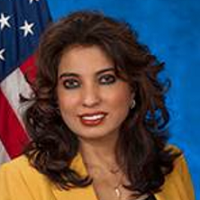 By Dr. Poonam Alaigh, Acting Under Secretary for Health, US Dept Veterans Affairs
By Dr. Poonam Alaigh, Acting Under Secretary for Health, US Dept Veterans Affairs
Twitter: @DeptVetAffairs
The human mind is a place of ever growing discovery, and the world of electronics and information technology (IT) is unleashing technological advancements at lightning speed.
While the rapid pace of technological advances can be difficult for a government to adopt and use, we have embraced that challenge when considering our next generation of electronic health records (EHR) within VA.
As part of our decision on the next generation of EHR, we looked to the past to inform the way ahead, because the history of EHR at VA is unique and important. For many years, our Veterans Integrated Service Technology Architecture (VISTA) program — created by VA programmers in the 1970s, and the first of its kind to offer clinical, financial and administrative functions within a single, integrated database — was a leader in the realm of EHR.
VISTA’s intermingled framework allowed applications to share a single, authoritative source of data for all Veteran-related care and services. As a result, VISTA has been widely credited for reforming the VA healthcare system, improving safety, and increasing efficiency. Not surprisingly, VISTA’s success spurred a national impetus to adopt electronic health records, similar to VISTA EHR, on a national scale.
As we assess the present and look to the future of EHR, we are determined to provide seamless care for our Veterans and qualified beneficiaries. To achieve this goal, Secretary Shulkin recently announced that VA has entered into contract negotiations with Cerner Corporation for the acquisition of the EHR system being deployed by the Department of Defense, and related services for deployment and transition across the VA enterprise in a manner that meets our needs.
We look to a future of seamless care
Although this journey is just beginning for VA, this journey is similar to the ones that our Veterans make when they transition from military service to civilian life. It is bittersweet, exciting, and yet a little unsettling.
To be successful, we will need the support of our partners, including members of Congress, Veterans service organizations, and many others who agree that providing seamless care to Veterans is in the public’s interest.
Together, we look to the future in which VA provides seamless care through an interoperable transformative system that will connect the VA with our many community partners and academic affiliations, as well as the Department of Defense – with stronger coordination of care and a greater Veteran/patient experience.
Providing this enhanced quality of care for Veterans is our goal — it is our mission.
This article was originally published on the Official Blog of the U.S. Department of Veterans Affairs and is republished here with permission.
